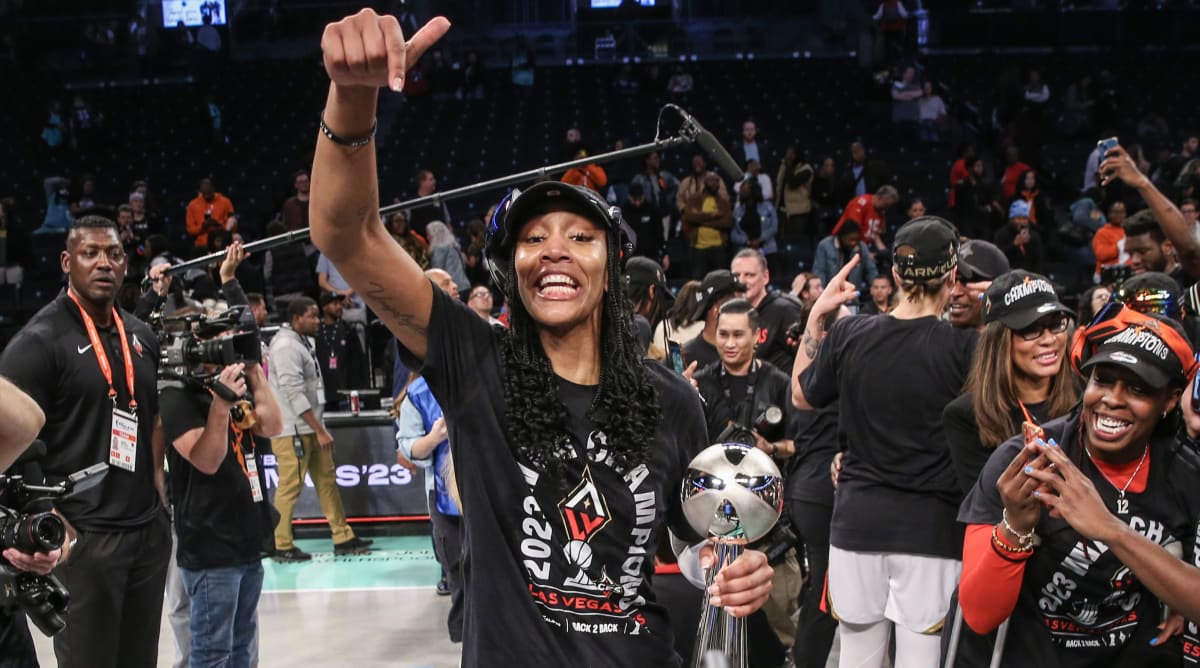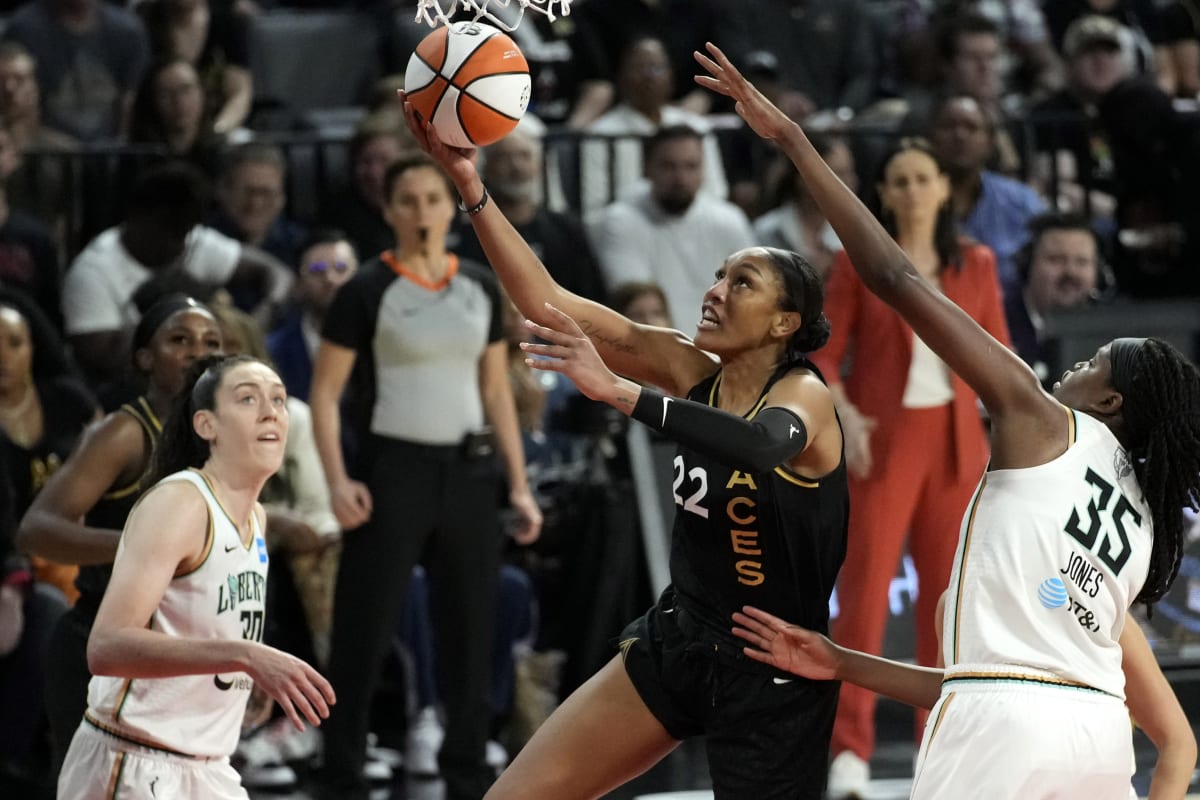A’ja Wilson is only 27 and still rising, which raises the question: How much higher can she go? She might already be the best player ever.
That might sound like hyperbole. It is not. What Wilson just did with (and for) the Aces was breathtaking. With her team down three starters, including a future Hall of Famer and last year’s Finals MVP, Wilson dominated the Finals against perhaps the most talented team in league history, the Liberty.

Wendell Cruz/USA TODAY Sports
During last year’s Finals, I started to ask Aces point guard Chelsea Gray whether WIlson might someday be considered the best player ever, and she cut me off before I could finish the question: “Yes.” She added: “It should already be starting to be talked about.” A year later, Gray’s point was proved in a most painful way: She injured her left foot in Game 3 of the Finals and sat out Game 4, and Wilson led the Aces to a title-clinching win in New York anyway.
When the WNBA named the 25 best players in league history in 2021—through a vote of media and WNBA figures—Wilson was not on the list. But for those who have watched her closely, Wilson’s performance in this series was more affirmative than transformative. They knew. Now everybody should.
Wilson’s style, both athletically and aesthetically, is probably held against her: A post player in a single leg sleeve with a chipper personality just doesn’t seem all that badass. But with Gray, Candace Parker and Kiah Stokes out—and the subconscious comfort of knowing that losing in Game 4 would still give the Aces a chance to win a title in Game 5 at home—Wilson willed her team to victory.
GOAT debates are fun, in part, because there is rarely a clear answer. There is not a clear answer here, either. But Wilson belongs in the conversation, and she is probably a decade or so from retirement.
Wilson has now been the best player for two championship teams. Only three players in WNBA history have won three MVP awards: Lauren Jackson, Lisa Leslie and Sheryl Swoopes. Wilson has won two, in 2020 and ’22, and if the ’23 vote were held again today, she almost certainly would have won that, too.
She should have won it anyway. Wilson was No. 1 in the league in offensive efficiency and the Defensive Player of the Year, yet somehow she finished third in MVP voting. How can someone be the best offensive and defensive player in the game, lead her team to the league’s best record and still not be MVP? What else was she supposed to do?
Voters gave the award to New York’s Breanna Stewart, and assigning a single reason for this would be reductive. More likely, there are several.
Stewart, despite her disappointing Finals, is a magnificent player. MVP voters in virtually every sport tend to lean toward a fresh story—Wilson won last year and came back with mostly the same team, while Stewart signed with New York and led a completely new group. The addition of a third prime candidate, Connecticut’s Alyssa Thomas, made the calculus more complicated. Thomas actually got the most first-place votes. (How Wilson ended up fourth on one ballot is a mystery for another day.)
There is also a perception these days that a traditional big cannot be the most valuable player in basketball, because the game is now dominated by three-point shooters and perimeter playmakers. The thinking is that even the best post players can be schemed out of the game. Stewart shoots many more threes than Wilson and converts a higher percentage. She had more than twice as many assists in the regular season. She seemed to make the Liberty go more than Wilson made the Aces go.

John Locher/AP
This Finals—especially Game 4—proved otherwise. If Wilson catches a pass deep in the post, forget it—that’s two points. If opponents establish position and force her higher, she is quick enough to get around them. If she faces the basket, she can blow past them. If they double her, she might score anyway—and if she doesn’t, she is adept and unselfish enough to pass to an open teammate. All the while, she occupies so much of the defense’s head space that her teammates invariably benefit.
All the Liberty really had to do in Game 4 was force somebody else to beat them. New York has two recent MVPs who are at least as tall as Wilson—Jonquel Jones and Stewart. Both have been first-team all-defensive players.
If ever there was a game that should have proved the limits of a dominant interior player, this was it. Yet Wilson was still so clearly the best player on the court—and the difference between champion and runner-up.
Wilson didn’t just outplay Stewart in the Finals. She severely outplayed her, to the point where it is hard to believe we were ever even discussing who is more valuable. A’ja Wilson is the best player in the WNBA. She is making a case as the best ever, too.







